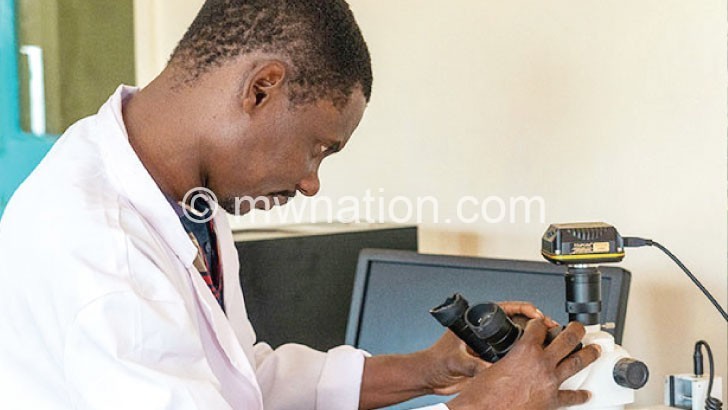Farmers adopt high-yielding tech
For the past three years, Aubrey Kabudula, a farmer from Maseya Village in Chikwawa, has been growing rice, maize and beans using alternate furrow irrigation.
By ensuring that half of the plant root is irrigated while the remainder is in a dry soil, the farmer and 175 members of Nanzolo Irrigation Programme utilise over 60 hectares of irrigated fields using less water than the common flooding method.
“This irrigation method has helped us grow different crops three times a year,” he says. “Each time I grow maize, I have harvested more than 1 500 kilogrammes which I use to feed my family. I sell some to generate money for other household needs.”

While agricultural productivity in southern Africa has increased in recent years, persistent climatic shocks have made it hard for farmers to realise enough food to last until the next farming season.
World Bank work
The Agricultural Productivity Programme for Southern Africa (Appsa)—a regional programme for Malawi, Mozambique and Zambia—was, therefore, established to increase availability of improved agricultural technologies through the establishment of regional centres of leadership on commodities of regional importance.
Other strategies include regional collaboration in agricultural research, technology dissemination, and training as well as increased sharing of agricultural information, knowledge, and technology among participating countries.
After seven years, there have been significant changes, with over 4.6 million people benefiting from the project in all the three countries.
In Mozambique, one million beneficiaries were reached, while the project reached about 1.3 million in Zambia and nearly 2.4 million in Malawi.
Research tech
The programme has released 367 technologies to farmers and 66 of these have been developed under the project.
In Malawi, two rice crop varieties, 13 maize hybrids, six bean varieties and six agronomic practices have been developed and made available to the farmers. In Mozambique, 17 new technologies are in use while Zambia produced 22 new technologies.
Farmers at Lifuwu Rice Irrigation Programme in Salima along the southern shoreline of Lake Malawi have already started using one of the new rice varieties known as Mpheta.
This rice variety matures early, enabling farmers to plant twice in a year, increasing their yield.
“My life has improved because we now grow the rice twice in a year and realise more money which we use to buy food, support our children to go to school and also improve our own lives,” said Bizwick Mkoma.
Capacity building
Dr Cypriano Mwale, a PhD student in agriculture, is researching on maize varieties that are resistant to striga at Chitedze Research Station in Lilongwe.
“There are more than 130 striga-resistant maize varieties that we have researched and produced, and we have so far released 30 resistant varieties of maize which farmers are planting in their farms,” says Mwale. “We need to integrate varieties that are resistant, have high yield and have all the necessary nutrients.”
More varieties are yet to be released as research progresses at Chitedze Research Station.
A total of 98 students have benefited from the project by studying at different levels of bachelor’s degree, masters and PhD in all the three countries.
Among these, 25 were from Mozambique, 52 from Zambia and 21 from Malawi.
Blessing Botha, World Bank Task Team Leader for Appsa, says the project supported a wide range of long-term interventions in the agriculture sector.
He says: “The technologies designed and promoted under this project—for example crop varieties that are highly productive, resistance or tolerant to various pests and diseases, improved nutrition crops such as iron and zinc beans are relevant because they respond to the emerging needs in the agriculture sector across all the three countries.”
Scaling up of the new technologies and knowledge sharing facilitated the cross-border sharing of better crop varieties and opened markets for local seed producers for export.
Malawi’s economy is predominantly agricultural, with about 80 percent of the population living in rural areas.
Agriculture accounts for about one-third of the gross domestic product and about 80 percent of export revenue.





